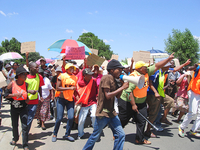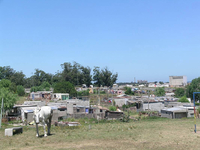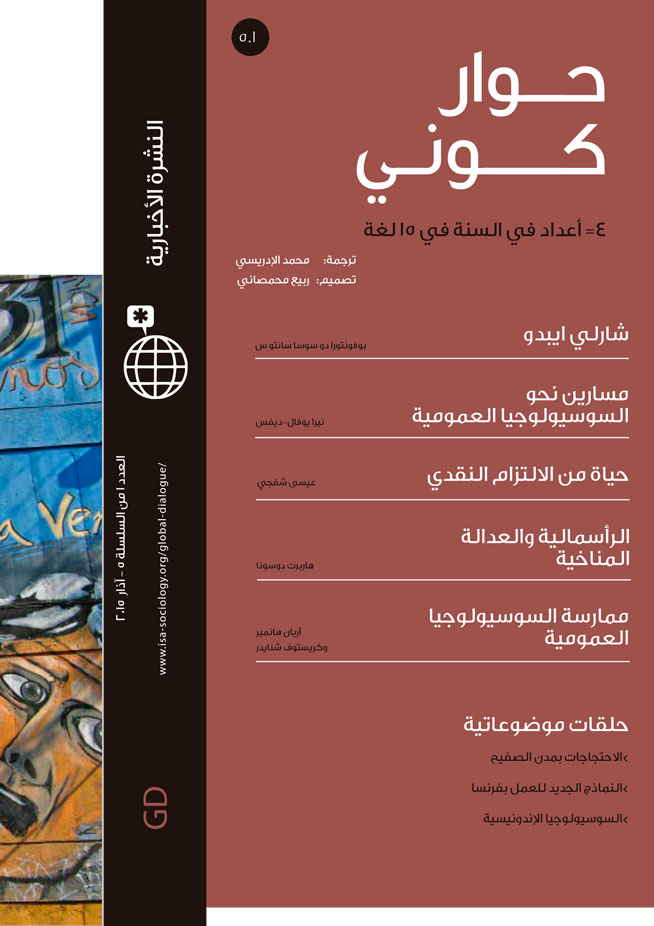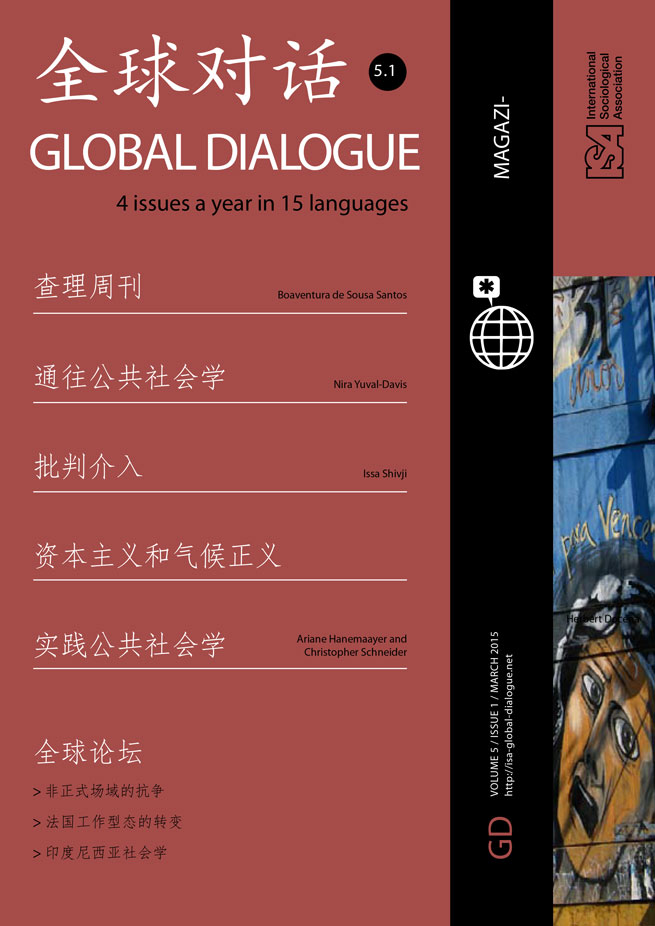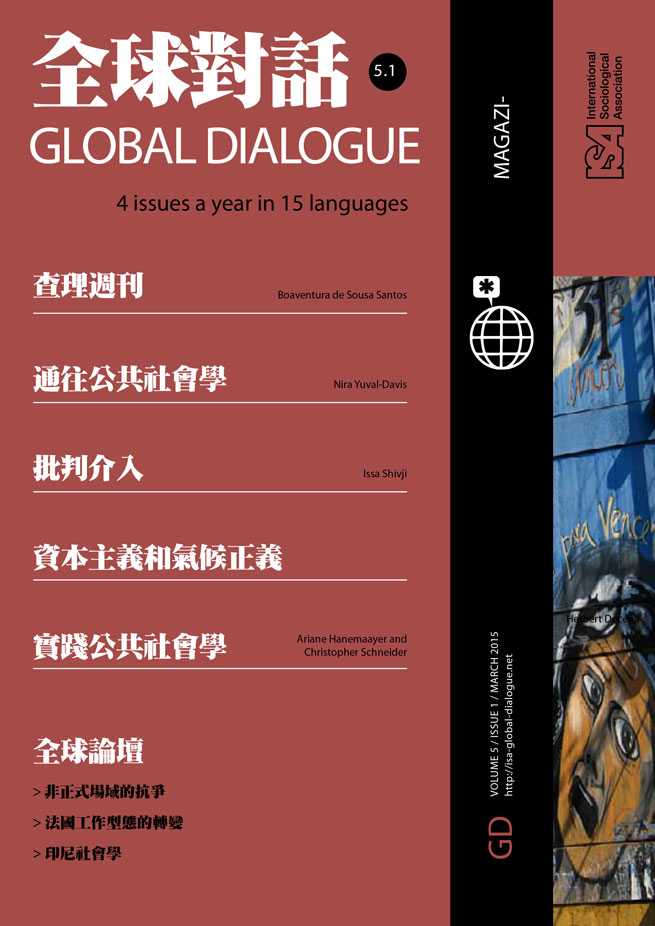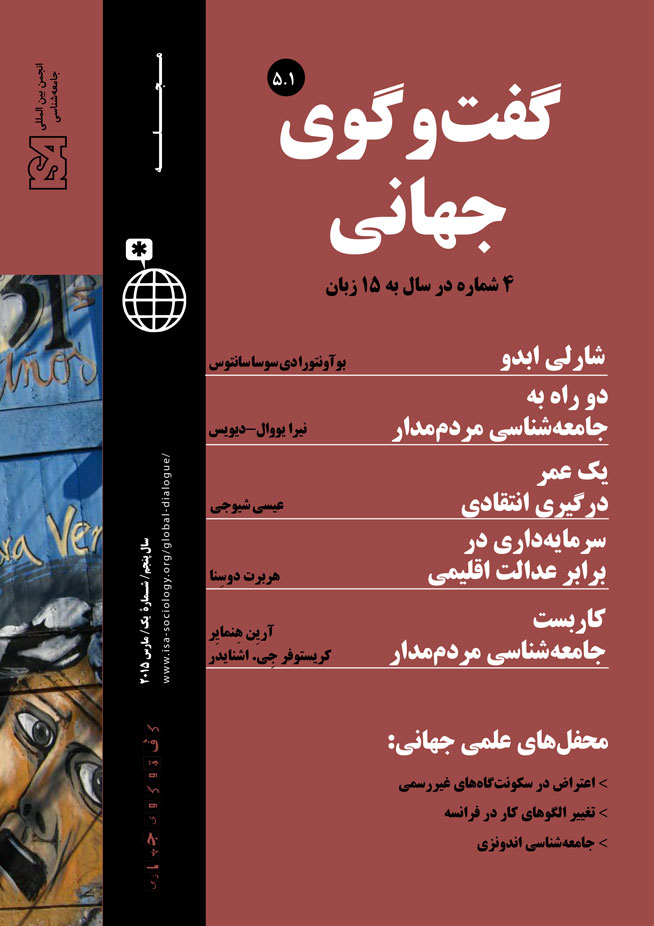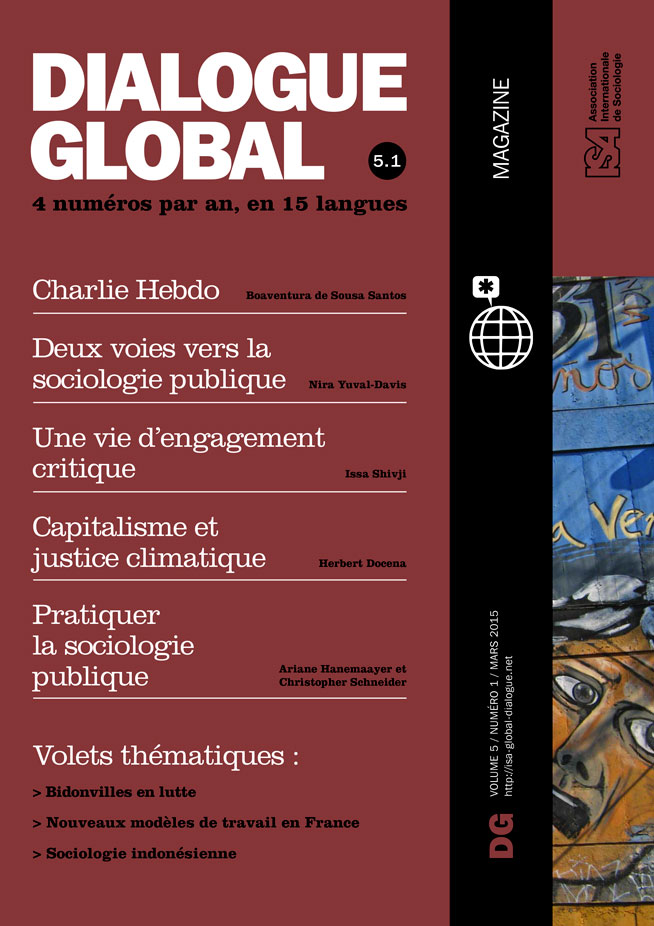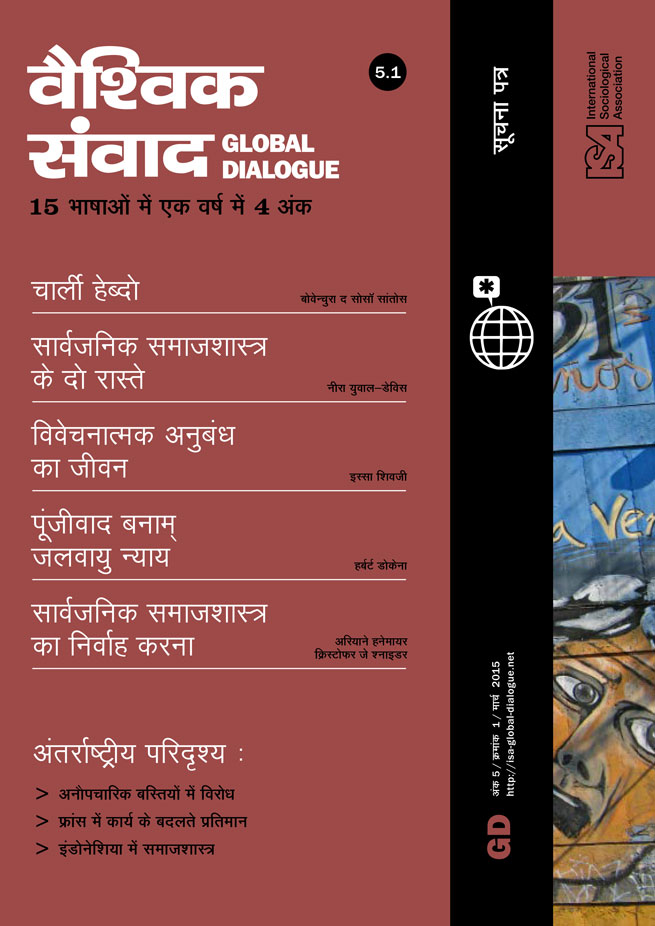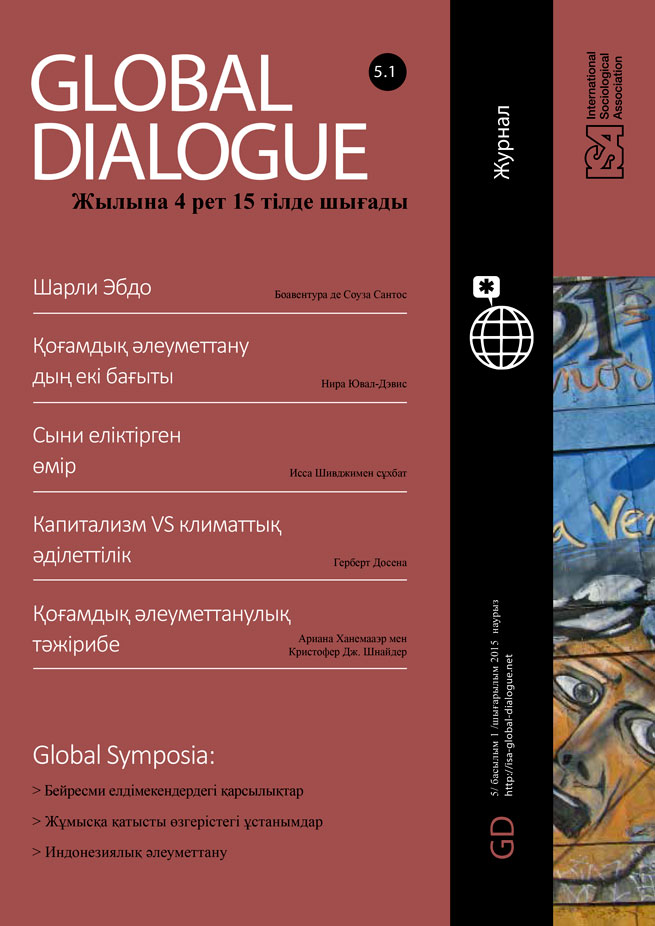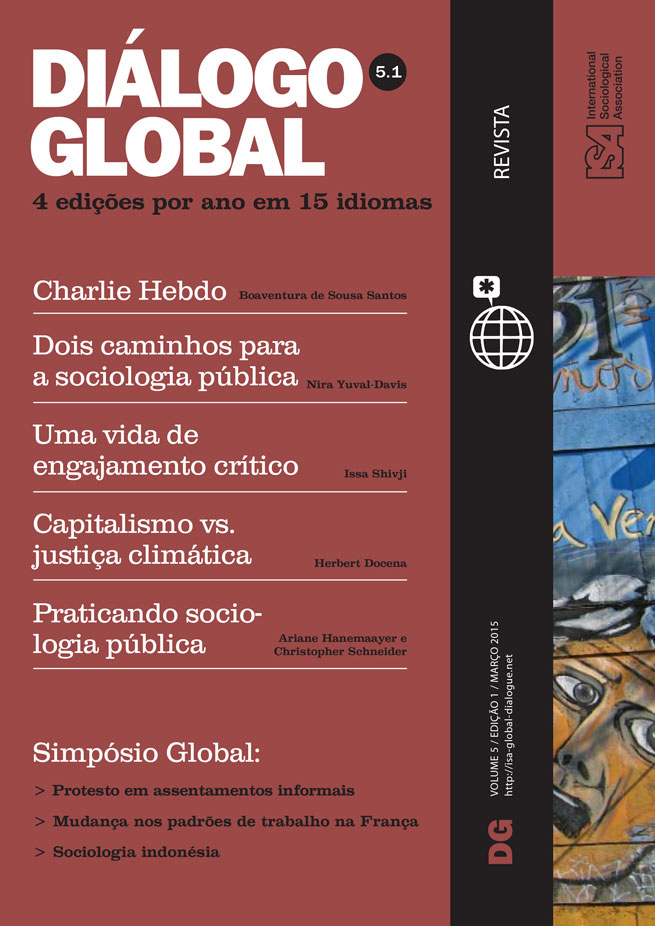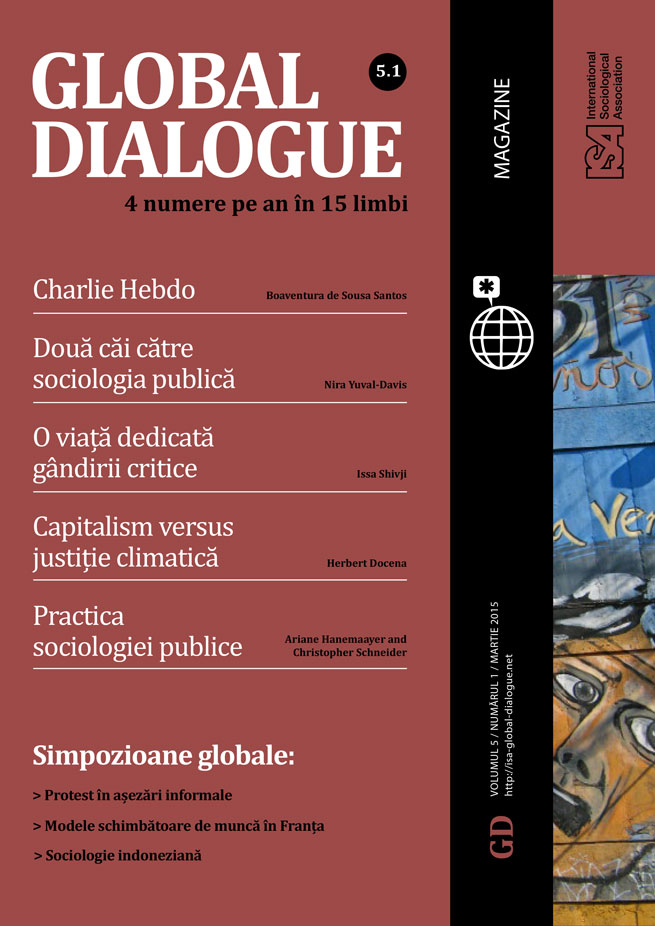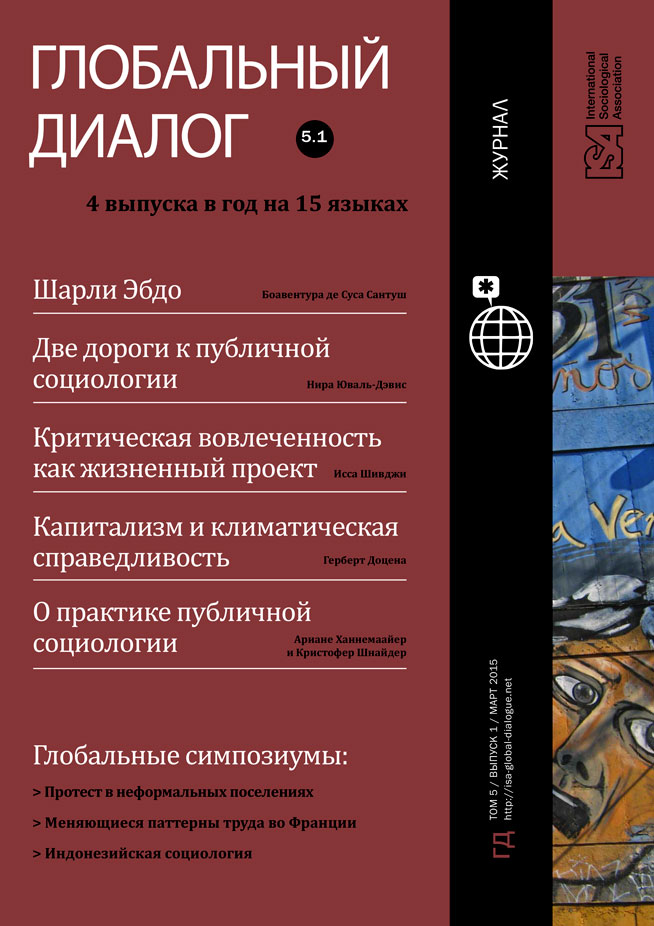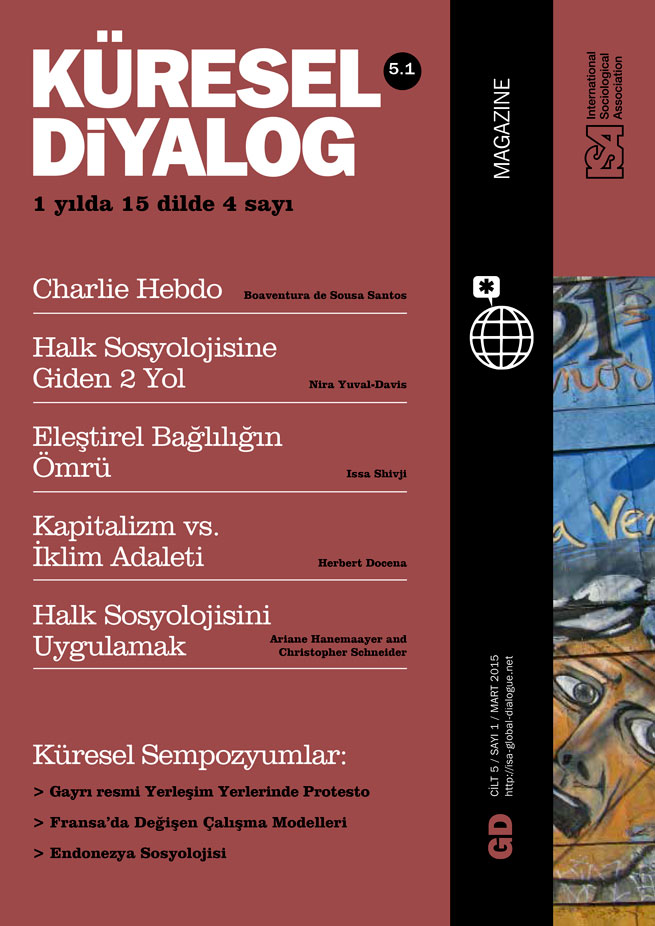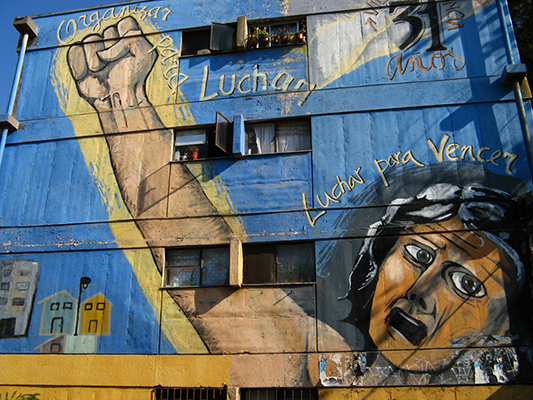Despite a long history of social mobilization, since 1990 Chile’s urban poor have often been portrayed as passive political actors suffering from segregation and social illnesses. Based on my research in the borough of Peñalolén in Santiago, however, I argue that in some cases at least, the urban poor have been able to organize sustainable resistance, re-claiming their right to the city.
David Harvey (2008: 23) defines the right to the city as “the right to change ourselves by changing the city.” Connecting urbanization and capitalism, and in line with an academic tradition that asserts the priority of people over profit, Harvey suggests that human beings deserve the capacity to re-shape processes of urbanization by exercising collective power. For poor dwellers, exercising the right to the city often involves defending their urban habitat and their access to services and resources in the city, resisting urban processes of capitalist surplus production.
Mainstream scholarly accounts suggest that, through consistent collective mobilization, the Chilean urban poor have managed to effectively claim their right to the city – although at some times more systematically than others. Collective struggles over housing by Chile’s urban poor can be traced back to the 1920s. In connection with political parties and many other institutions, the so-called “dwellers movement”[1] took a central role in the national political arena, pressuring the government through urban land takeovers. Between 1957 and 1970 land occupations became increasingly popular, reshaping Chilean cities, especially Santiago. In fact, in 1972, during the Allende administration, 16.6% of Santiago’s population lived in informal settlements (Santa María, 1973: 105).
As the home territories of leftist organizations, many shantytowns were severely repressed by the military dictatorship (1973-1989). Some became strongholds of grassroots resistance, playing a crucial role in the national protests that from 1983 exposed the cruelty of the authoritarian regime.
After 1990 – when Chile restored its democracy – the prolific and coordinated dwellers’ actions vanished from the academic literature. Although several research centers devoted attention to popular mobilization through the 1980s – e.g. University of Chile, PUC, CIDU, SUR, Flacso, Vicaría de la Solidaridad – in the 1990s academic accounts emphasized demobilization rather than collective action, describing shantytowns as nests of criminality, drug trafficking and other social illnesses (Hipsher, 1996; Tironi, 2003).
Santiago’s Eastern district of Peñalolén – as well as other initiatives developed in Chilean cities – offers a counter-example to those narratives of demobilization. In fact, Peñalolén’s popular neighborhoods have systematically held contentious political initiatives over the past 25 years, managing not only to claim their rights, but also to directly shape the district and residents’ immediate environment.
Demanding their “right to live,” organized through the Coordination of Committees of People with No House, almost 900 squatter families coming from different parts of Peñalolén invaded high-price land in the east of the district. In the winter of 1992 they produced Esperanza Andina: the first land occupation of Chile’s new democratic regime. Through strong communitarian organization, rejecting co-optation by political parties and the government, Esperanza Andina managed to assertively demand social housing within the local urban habitat – avoiding the peripheral relocation of the poor so often central to social housing policies. After several years of struggles, conflicts, and negotiations dwellers obtained land rights formalizing their neighborhoods, and acquired subsidies to build houses in the same lots.
In July 1999 the persistent housing demand, along with dwellers’ rejection of expulsion to the urban peripheries, led to another land occupation in Peñalolén. What became known as “Toma de Peñalolén” was clearly the biggest land occupation in Chile since 1990. Involving more than 1,800 families, the Toma pressured authorities to provide social housing subsidies within the district. Although the Toma’s organization eventually split, excluding a more radical faction from negotiations, by 2006 nearly 900 families were re-located in houses constructed in Peñalolén, while most others were allocated lots in other districts.
Peñalolén’s struggle over social housing has persisted until today. In fact, since 2006 the Movement of Dwellers in the Struggle (MPL) – a leftist grassroots organization born in the district – has coordinated local housing committees to demand a right to social housing in their district of residence.
Events in Peñalolén have however demonstrated that struggling over social housing may not be enough for poor dwellers to assert substantive rights in the city. In 2009 residents’ and grassroots organizations became aware that a new master plan for Peñalolén was to be implemented. Changing land regulation to allow the construction of buildings, incorporating new motorways to improve car access to the district, and attracting new retail shops, the new master plan aimed to upgrade the district by increasing land values. Additionally, the master plan did not include enough land to cover the district’s need for social housing. While some neighbors found those changes convenient, most resilient grassroots organizations rejected the looming gentrification process. Those organizations campaigned against the new master plan, calling for a legally binding district referendum. After disputed campaigns by the Municipality and local neighborhood organizations, in late December 2011 the master plan was democratically rejected. Protecting the district from gentrification, poor dwellers have managed to conserve an urban habitat that they created through self-construction and squatting in the 1960s and 70s.
Peñalolén’s eastern neighborhood, Lo Hermida, has developed a strong culture of contentious mobilization in the last 25 years. Drawing on communitarian values and an identity based in collective action, neighbors carry out different initiatives to collectively re-incorporate local zones that have been co-opted by other social actors. For example, residents organize music workshops or community orchards in neighborhood squares as a form of re-signifying and re-occupying zones taken by drug traffickers or threatened by private companies.
Historically condensing events of collective contestation, Peñalolén echoes many other initiatives by the Chilean urban poor that uphold their substantive access to rights in the city (Sugranyes, 2010). These struggles demonstrate that the Chilean urban poor are still able to mount effective, sustainable contentious collective action, demanding their right to the city.
[1] The movement by the Chilean urban poor between the 1920s and 1989 has been traditionally called “movimiento de pobladores” in Spanish. Although I use “pobladores” and “dwellers” interchangeably, this is not totally precise, for the word in Spanish has historically acquired a political meaning in Chile: it refers to urban poor residents who fi ght for their collective rights.
References
Harvey, D. (2008) “The Right to the City.” New Left Review 53: 23-40. Retrieved from http://newleftreview.org/II/53/david-harvey-the-right-to-the-city.
Hipsher, P. (1996) “Democratization and the Decline of Urban Social Movements in Chile and Spain.” Comparative Politics 28(3): 273-297.
Santa María, I. (1973) “El desarrollo urbano mediante los ‘asentamientos espontáneos’: El caso de los ‘campamentos’ chilenos.” EURE 3(7): 103-112.
Sugranyes, A. (2010) “Villa Los Condores, Temuco, Chile Against Eviction and for The Right to the City”, pp. 145-148 in A. Sugranyes and C. Mathivet (eds.) Cities for All Proposals and Experiences towards the Right to the City. Santiago de Chile: Habitat International Coalition (HIC).
Tironi, M. (2003) Nueva Pobreza Urbana, Vivienda y Capital Social en Santiago de Chile, 1985-2001. Revista de Sociología. Santiago: Predes Editores.
Simón Escoffier, Oxford University, UK <simon.escoffier@sant.ox.ac.uk>

